Kingdom Animalia Family Enoploteuthidae Higher classification Watasenia Phylum Mollusca | Order Teuthida Scientific name Watasenia scintillans Rank Species | |
Genus Watasenia
Ishikawa, 1914 Similar Squid, Japanese flying squid, Shiokara, Japanese amberjack, Chinmi | ||
firefly squid sparkling enope squid
The firefly squid, Watasenia scintillans, also known as the sparkling enope squid, is a species of squid in the family Enoploteuthidae. It is the sole species in the genus Watasenia.
Contents
- firefly squid sparkling enope squid
- The firefly squid by gretchen
- Bioluminescence
- Mating
- Commercial use
- References
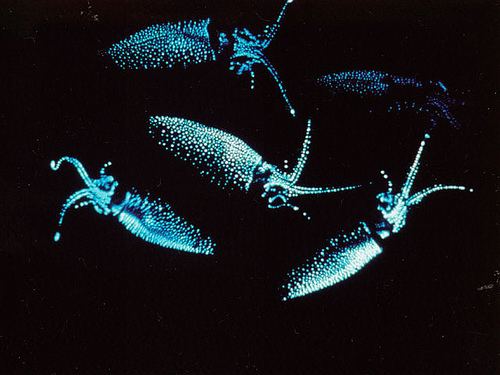
The firefly squid by gretchen
Bioluminescence
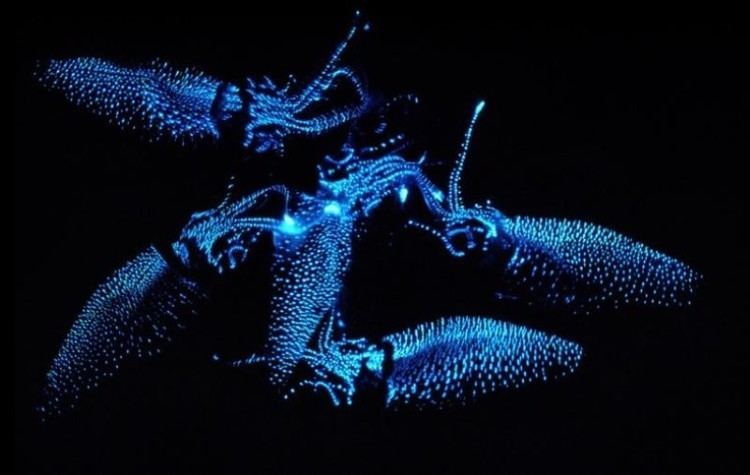
The firefly squid is found in the Western Pacific ocean at depths of 183 to 366 metres (600–1200 feet) and is bioluminescent. The mantle, head, arms and tentacles are dotted with tiny, light-producing organs called photophores. When flashed, the light attracts small fish, which the squid can feed upon.
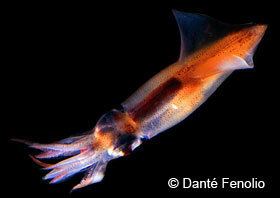
This squid has three visual pigments located in different parts of the retina which likely allows color discrimination, each having distinct spectral sensitivities.
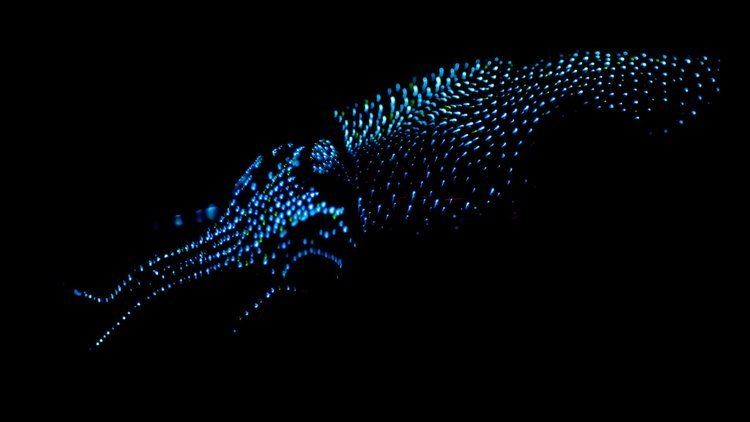
The firefly squid measures about 3 inches (7.6 cm) long at maturity and dies after one year of life. It has the standard eight arms and two tentacles, with one pair each having three, bright light-emitting organs at the tips.
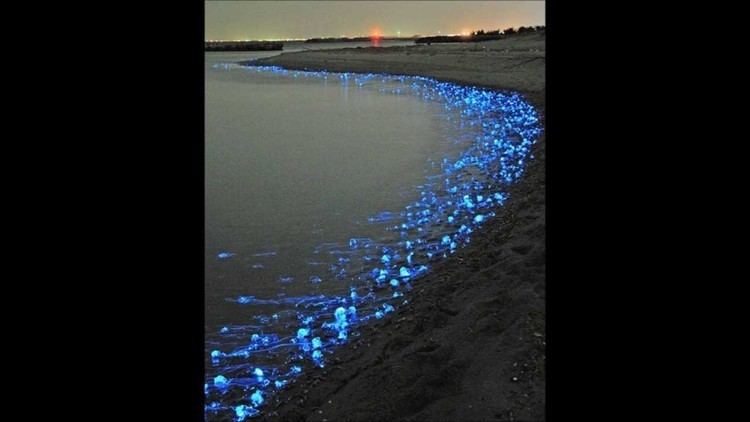
The squid spends the day at depths of several hundred metres, returning to the surface when night falls. It uses its ability to sense and to produce light for counter-illumination camouflage: it matches the brightness and colour of its underside to the light coming from the surface, making it difficult for predators to detect it from below.
Mating
The firefly squid can also light up its whole body to attract a mate. Once the squid's eggs have been fertilized and laid, it dies, having reached the end of its one year lifespan. The mating season lasts from March to June.
Commercial use
This squid is commercially fished in Japan, accounting for an annual catch of 4,804 to 6,822 tons from 1990 to 1999.
